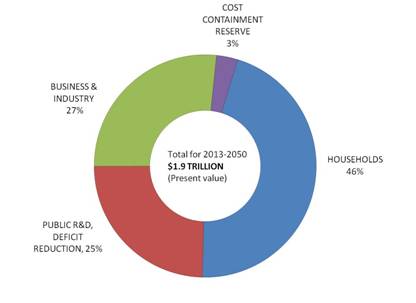The Congressional Research Service released a brief report last week comparing three energy and climate bills currently under discussion in the Senate. This comparison is useful to anyone looking for a fairly objective look at the three proposals. One key point to recognize though is that the analysis solely focuses on the policy mechanisms proposed in each of the three bills, it does not compare or contrast effects (economic and otherwise) of the bills.
For example, in the bill proposed by Senators Cantwell and Collins, the Carbon Limits and Energy for America’s Renewal (CLEAR) Act, the analysis does mention that the bill includes a “safety valve” as a mechanism to control the price of carbon. A safety valve works by allowing for the increase of emission allowances if the price of carbon rises above a certain level. Intended as a cost containment measure, the so-called safety valve undermines the proposal’s ability to achieve the targeted levels of CO2 emissions reductions (in 2050, 83% below 2005 levels), put forth by its authors. When the safety valve is used, the targeted carbon reductions fly out through the window. The CRS report makes no mention of this significant potential consequence of the mechanism.
Another issue to keep in mind is that the CRS analysis does not consider the long-term trajectory of allowance allocations in the American Power Act, the bill Senators Kerry and Lieberman co-authored. The Congressional Research Service includes only a snapshot view of allowance allocations for the year 2016. Since allowance allocations vary in the later years on the proposal, it is more helpful to asses the allowance allocations for the full duration of the legislative period (2013 to 2050). The chart below shows the projected allowance allocations divided by sector, for the time period 2013 to 2050, in net present value and therefore offers a more complete picture. As this graph shows, 46% of the allowance value is directed at households over the course of the bill.
When attempting to compare Senate proposals, it is important to focus attention on both the proposed policy but especially its likely effects. This CRS analysis is a helpful tool in understanding the former, but it is essential to remember to also consider the latter before drawing any substantive conclusions on which proposal will work best to create clean energy jobs, control carbon emissions and keep America safe. The more comprehensive a climate and energy bill, and the less loopholes, the more benefits will accrue.










